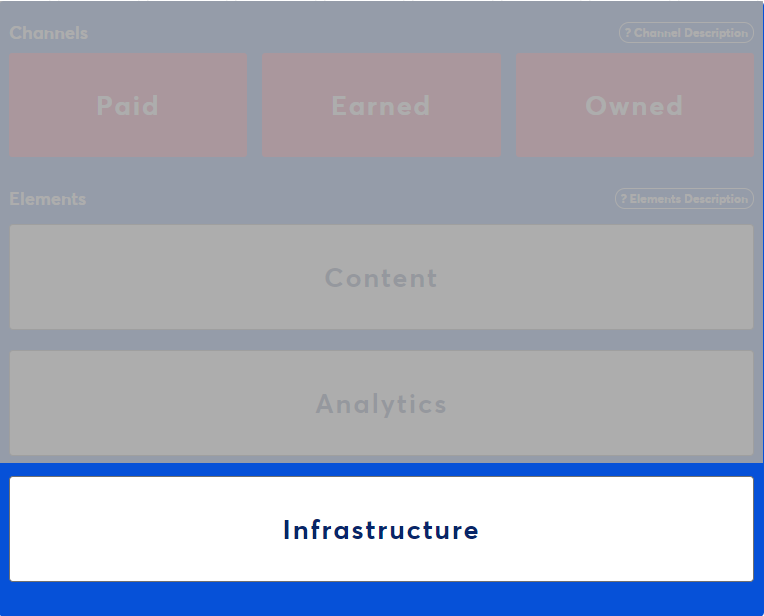This series was originally written by Ian Lurie in 2015 and updated by Chad Kearns in 2020.
In Part 1, I talked about the Marketing Stack as a whole. In this post, I’ll walk through the base of the Stack: infrastructure.
Part 1: The Digital Marketing Stack
Part 2: Infrastructure ← You are here
Part 3: Analytics
Part 4: Content
Part 5: The Channels – Paid, Earned and Owned
Infrastructure is the technology that powers everything you do, and it’s one of the most under-optimized aspects of digital marketing. Getting this right is fundamental to success. Infrastructure delivers your content through the channels you utilize and powers the tools used to analyze the results.

The better your infrastructure, the more effective your marketing. You don’t have to be the head of IT to check on the following:
Speed
Site speed is probably the most overlooked optimization that marketers can invest in to improve conversion performance. We’ve even done a study that shows the effect of improving site speed on the bottom line.
To improve your site’s speed, think about:
- Image compression. Friends don’t let friends upload uncompressed images.
- Content distribution. Use. A. CDN. That’s a Content Distribution Network. It delivers ‘static’ content like javascript, images, and CSS in compact format over super-speedy networks.
- Caching. Simple rule of server caching: Never deliver the same thing twice to the same browser. Ever.
- Rendering time. Download time isn’t the only factor. Organize HTML code so browsers can quickly sift through your page and display it.
Those are the starting points. Get them done, then learn the crap out of site speed optimization. Read our posts about site speed basics and the geektacular techniques for squeezing a little more speed out of your site.
Stability
Does your website work 99.9999% of the time? If not, you’ve got stability problems. Assume that the first time your site fails is the last time a customer uses it. Your goal should be 100% stability.
To get there, think about:
- Hardware. The cloud is a solid option here. If you use a decent provider.
- Software. Build for stability first, features second. No use having a three-tiered discount system or a custom comments toolset if it breaks your whole site.
Scalability
What would happen if you go from 10,000 transactions in a month to 50,000? That may feel far-fetched, but it’s easy to prepare for that kind of scale, and the upside is worth it. Think about the scalability of day-to-day management, too: moderation, customer service, and content management have to grow as you do.
Be reasonable. If your budget is $5,000, you can’t build a publishing platform that can handle 20 million visitors per day. Still, you can build for scalability within any budget by building smart.
Security
No explanation necessary. Don’t even try to do this yourself. Hire an expert.
If you’re looking for a place to improve online revenue, conversion rates, or overall experience, start with infrastructure. Its position at the bottom of the Stack means changes here have the broadest possible payoff across everything else that you do.
Note: Read a bit more about infrastructure and compare it to other parts of the Stack in our Marketing Stack Explorer.
Part 1: The Digital Marketing Stack
Part 2: Infrastructure ← You are here
Part 3: Analytics
Part 4: Content
Part 5: The Channels – Paid, Earned and Owned









